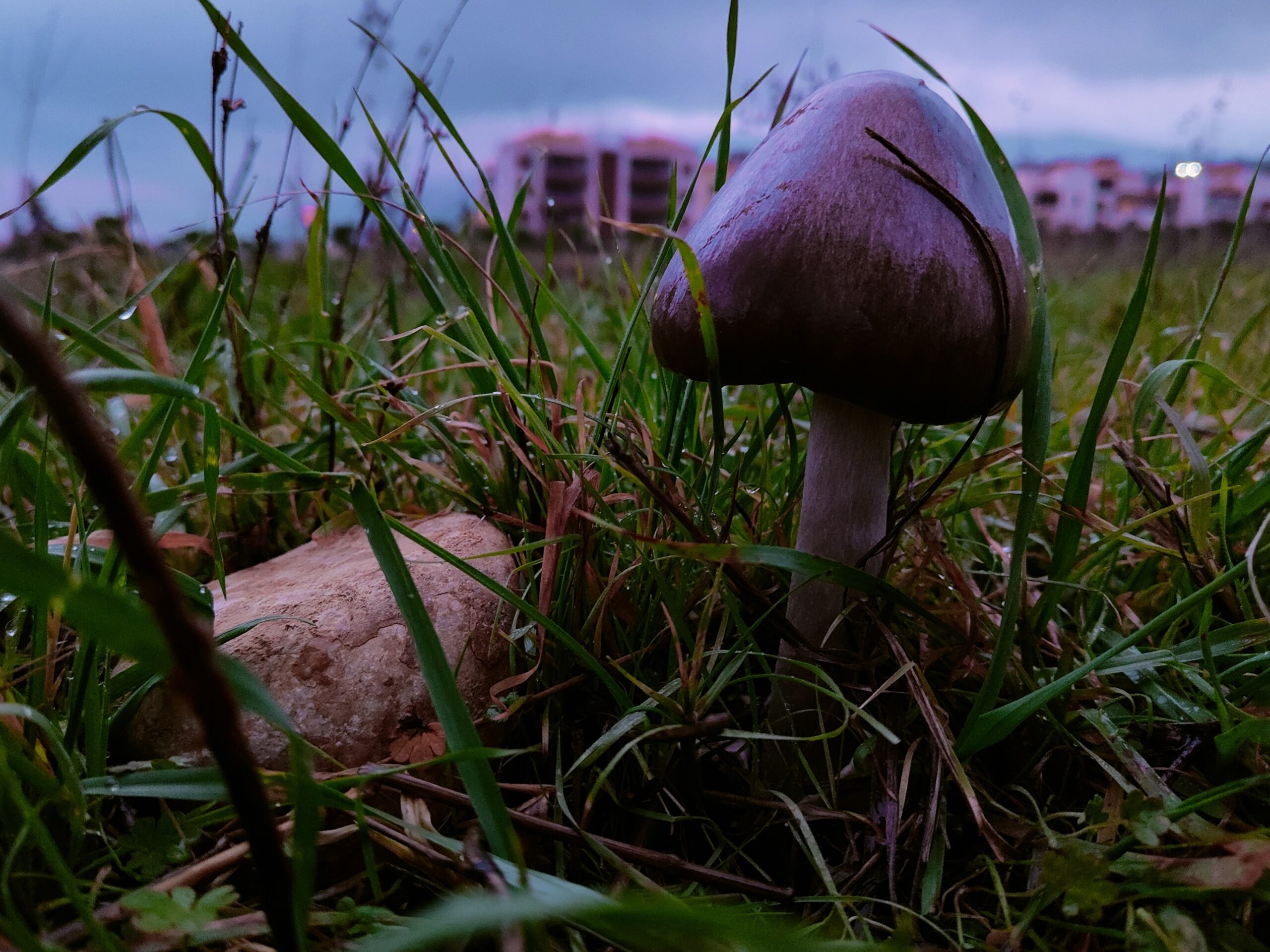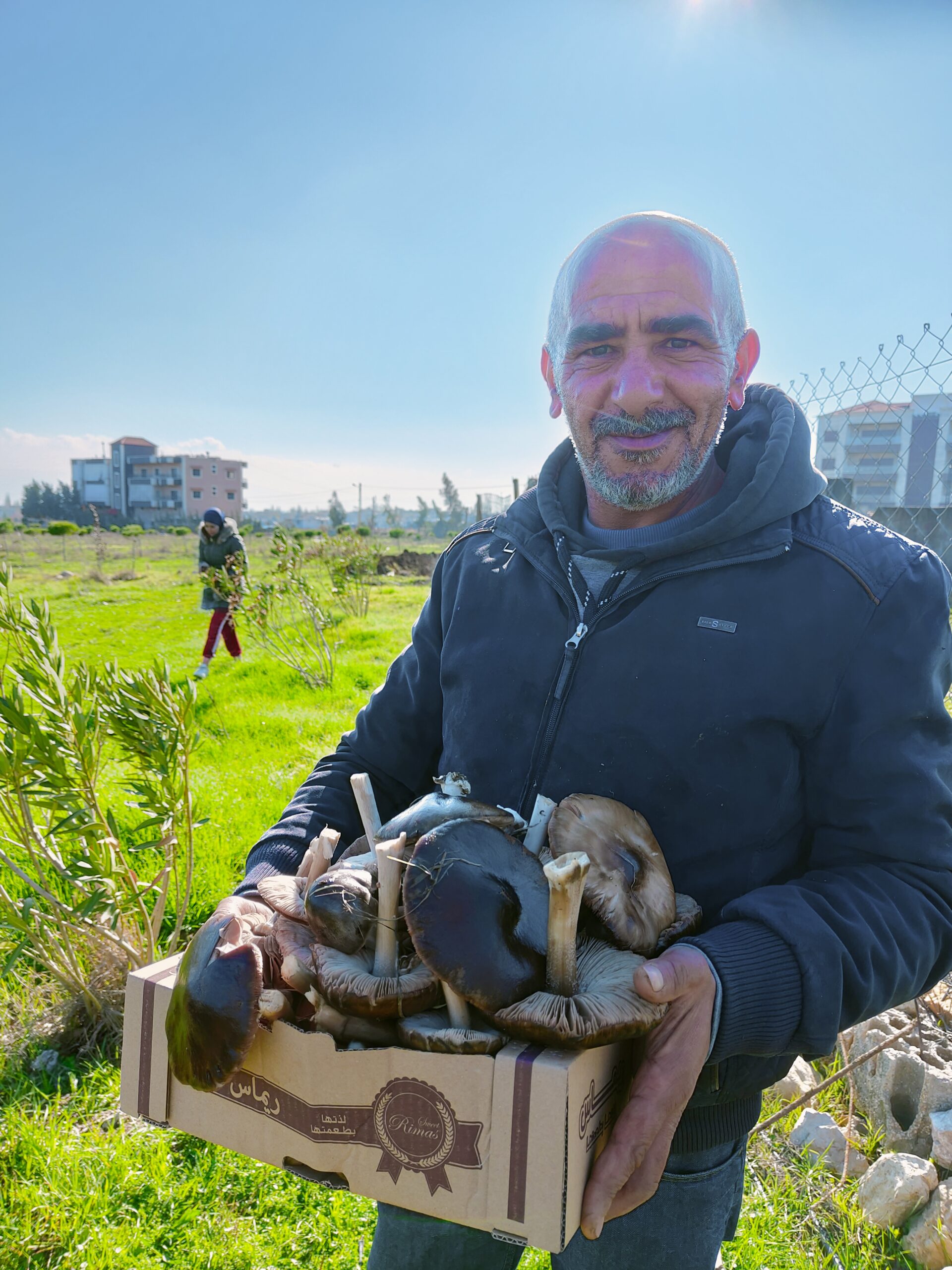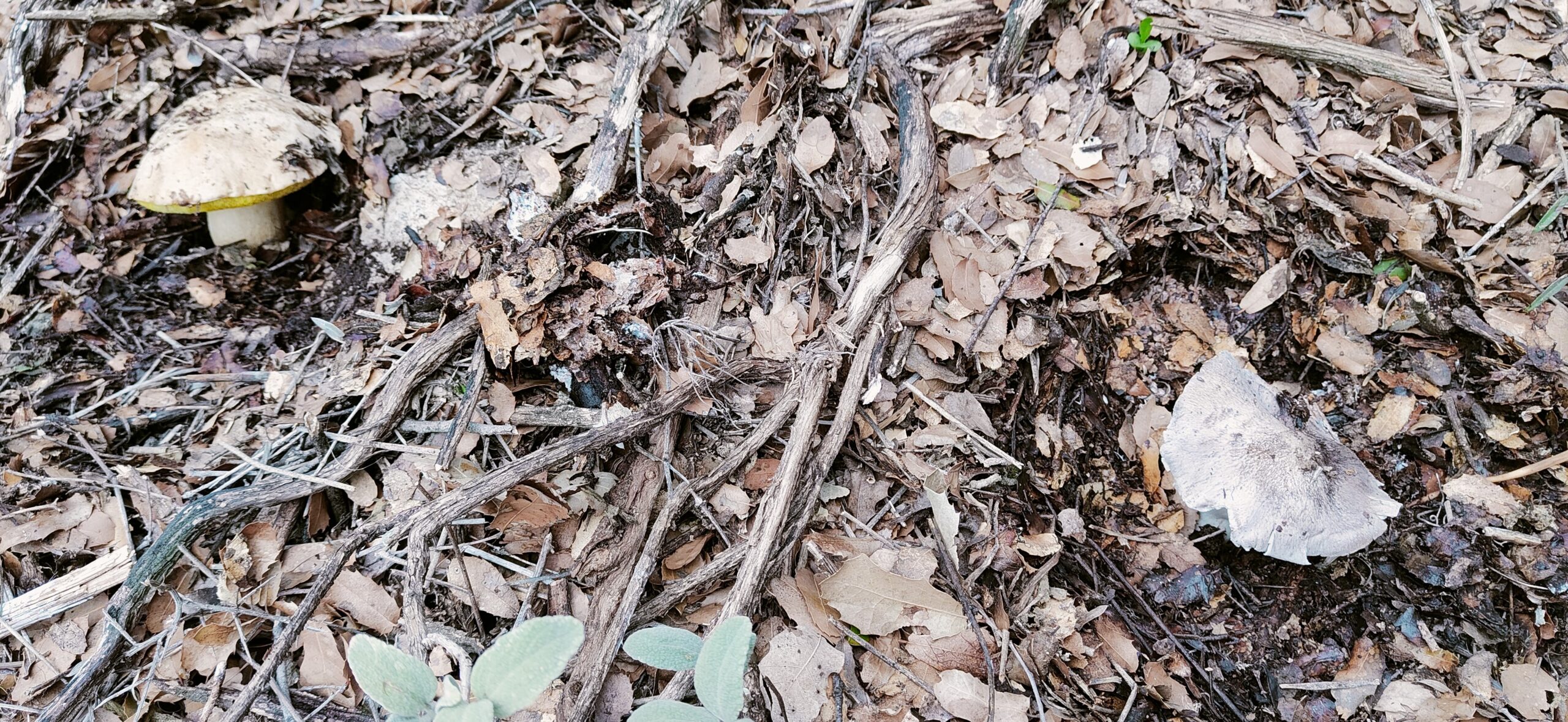How to cook Melanoleuca albifolia?
Mekse culinary secrets unveiled
Cooking is about taming flavours. But taming is an art, and the case of Melanoleuca albifolia (called in Arabic biz al-‘ijl: the heifer’s nipple) is a good demonstration of it.

Melanoleuca is a little-known genus of saprotrophic mushrooms (i.e. whose nutrition is based on the extracellular digestion of decayed organic matter), and the species Melanoleuca albifolia is generally unknown despite its mucous nipple-shaped pileus that makes it very distinctive. Also, mycological dictionaries and databases state that, like all Melanoleuca, Melanoleuca albifolia is not poisonous, but they do not identify it as edible, because of its very bad taste. At best, they describe it as being “without culinary interest”. However, in Mekse, where it grows like clover in late autumn, a totally different story can be heard. Melanoleuca albifolia is not only well-known, but also highly appreciated as a meal.

Youssef and his wife, Um Muhannad
Some current edible species can be found, like the shaggy ink cap (Coprinus comatus) or desert truffles (Terfeziaceae), but not in such quantities or so easily as Melanoleuca albifolia. The problem is that its flavour is unbearable: strongly bitter and unpleasantly earthy. The cook’s issue is: how can one tame this flavour? And when in December we see men with a basket or even a plastic bag following their wives in the meadows and, while the women practice the tasli’, the art of cutting edible herbs like wild chicory, young thistles (shawk, dardâr), … it’s the men who face the soft danger of cutting mushrooms. Why is there such a passion for Melanoleuca albifolia? What is the culinary secret mastered by Mekse cooks for preparing Melanoleuca albifolia and taming its pungent flavour?
The first way is to get rid of the taste entirely. I will call it Hamzeh’s solution, from the name of the cook. It consists in drowning the mushrooms in boiling water for five minutes, washing them in cold water, and then preparing them quickly with onions. But the mushroom remains only a pale vegetal, viscous as a jellyfish, and worse, totally tasteless. The flavour is here tamed excessively; it is broken.
Another solution consists in taming the bitterness with the help of fire, a soft fire for a long, long time. This is Youssef’s solution. Here remains a mushroom that tastes like game meat. Taming is here a question of softening.
The last level in the art of cooking Melanoleuca albifolia, and taming its flavour is reached by Om Muhannad. This is the art of domesticating the wildness, and making it enter the society of flavours.
We will share the complex recipe with you.
First step
1° Pick the mushrooms before they get spongious,
2° Clean them with tap water and let them dry in a colander,
Second step
3° Cut them into large wedges
4° Fry some onions (the same quantity as the mushrooms),
5° Add the mushrooms,
6° Add salt, black pepper, the ‘seven spices’, stock cube, species for kabsa (mix of cloves, cardamom, saffron, cinnamon, black lime, bay leaves and nutmeg),
7° Reduce the juice until it disappears totally, then let it dry in the colander,
Third step
8° Put two spoons of olive oil in a pan and add the mushrooms and onions, move it quickly on medium fire,
9° Add pomegranate molasses and serve.
Finally, this situation is the same for numerous other mushrooms, like the blackening russula (Russula nigricans) which can be found in the Oak tree forests on the slopes of Mount Lebanon a few kilometres above Mekse, and which often grow together with the sticky bun (Boletus luteus). Indeed, Russula nigricans is generally labelled as poisonous; however, certain mycologists who are also great cooks, consider them to be excellent.
